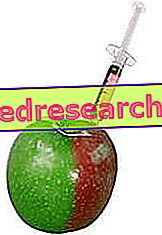
What is Pegasys?
Pegasys is a medicine that contains the active substance peginterferon alfa-2a. It is available as a solution for injection in vials or pre-filled syringes (135 and 180 micrograms).
What is Pegasys used for?
Pegasys is indicated for the treatment of adult patients with the following diseases:
- chronic hepatitis B (an inflammation of the liver extended over time and caused by the hepatitis B virus). It is used in patients suffering from compensated liver disease (when the liver is damaged, but works normally), in which signs of continuous reproduction of the virus as well as liver damage are also observed (increased levels of alanine aminotransferase [ALT], an enzyme of the liver, and signs of damage when the liver tissue is examined under a microscope);
- chronic hepatitis C (an inflammation of the liver extended over time and caused by the hepatitis C virus). It can be used in patients with liver cirrhosis or in subjects co-infected with human immunodeficiency virus (HIV). The optimal treatment with Pegasys is in combination with ribavirin (an antiviral drug). This combination is indicated in treatment-naïve patients (i.e. never previously treated) and in patients for whom the previous treatment, including any type of alpha interferon, with or without ribavirin, had no effect. Pegasys can be used on its own in patients who cannot tolerate or cannot take ribavirin.
The medicine can only be obtained with a prescription.
How is Pegasys used?
Treatment should be initiated by a physician experienced in the treatment of patients with hepatitis B or C. Pegasys is given by injection under the skin in the abdomen or thigh. The dosage is usually 180 micrograms once a week for 48 weeks, although some individuals with hepatitis C may require 16, 24 or 72 weeks of treatment. In case of side effects, the dosage may need to be adjusted. For all dosage information, see the Summary of Product Characteristics (also included with the EPAR).
How does Pegasys work?
The active substance in Pegasys, peginterferon alfa-2a, belongs to the group of "interferons". Interferons are natural substances produced by the body to help it cope with attacks such as viral infections. The mechanism of action of alpha interferons in viral diseases is not yet fully known; however, it is believed that they act as immunomodulators (substances that modify the immune responses, that is to say defense, of the organism). Alpha interferons can also stop the proliferation of viruses.
Peginterferon alfa-2a is very similar to interferon alfa-2a, already available in the European Union (EU) under the name Roferon. In Pegasys, interferon alfa-2a was "pegylated" (ie coated with a chemical called polyethylene glycol). This reduces the rate at which the substance is eliminated from the body and allows the drug to be administered less often. The interferon alfa-2a contained in Pegasys is produced by a method known as "recombinant DNA technique": that is, it is obtained from a bacterium in which a gene (DNA) has been inserted that makes it capable of producing interferon alpha -2a. The replacement interferon acts like naturally produced interferon alpha.
How has Pegasys been studied?
In chronic hepatitis C Pegasys was examined alone in three studies out of a total of 1 441 patients, and in combination with ribavirin in a study involving 1 149 patients. All of these studies lasted 48 weeks and compared the effectiveness of Pegasys with that of interferon alfa-2a. Other studies on the combination of Pegasys and ribavirin include: a comparison study of two dosages and two durations of therapy (24 or 48 weeks) in 1 285 patients; a study that compared two 16- and 24-week treatments in 1 469 patients, a study of 514 patients with normal ALT levels; a study carried out on 860 HIV co-infected patients and a final study on 950 patients who had not responded to previous treatment with peginterferon alfa-2b and ribavirin.
In chronic hepatitis B, two studies were conducted to compare Pegasys with lamivudine (another antiviral drug) in 820 "HBeAg positive" patients (ie infected with the common type of hepatitis B virus) and 552 "HBeAg negative" patients ( that is with a type of mutated virus, which produced a more difficult form of chronic hepatitis B to cure).
In all cases, the main measure of effectiveness was the disappearance of hepatitis virus markers from the blood at the end of the therapy and at the follow-up visit after six months.
What benefit has Pegasys shown during the studies?
For chronic hepatitis C, Pegasys alone was found to be more effective than interferon alfa-2a. A greater number of subjects responded to the therapy, with a percentage between 28% and 39% of patients treated with Pegasys in which no markers of the virus of hepatitis infection in the blood were detected at the control visit, compared to 8% -19% of subjects treated with interferon alfa-2a. Pegasys was more effective in combination with ribavirin than not used alone (45% of favorable responses to the control visit compared to 24%) and as effective as the combination of interferon alfa-2a and ribavirin (39% of favorable responses). Additional studies confirmed the effectiveness of Pegasys, even in patients with HIV and those who had not responded to previous treatment.
For chronic hepatitis B, Pegasys was more effective than lamivudine in HBeAg positive patients and in HBeAg negative patients. The percentage of patients who did not show signs of viral activity in the blood at the follow-up visit was 32% with Pegasys and 22% with lamivudine in the HBeAg positive subjects, and 43% with Pegasys and 29% with lamivudine in the HBeAg negative patients.
What is the risk associated with Pegasys?
The most common side effects with Pegasys (seen in more than 1 patient in 10) are anorexia (loss of appetite), headache, insomnia, irritability, depression, dizziness, nausea, diarrhea, abdominal pain, alopecia (fall of hair), itching, myalgia (muscle pain) and arthralgia (joint pain), fatigue, fever, chills, reactions at the site of administration and pain. For the full list of all side effects reported with Pegasys, see the Package Leaflet.
Pegasys should not be used in people who may be hypersensitive (allergic) to alpha interferons or any of the other components. Pegasys should not be administered to:
- patients with Autoimmune hepatitis (a disease in which the body attacks the liver);
- patients with severe liver disorders;
- patients with a history of severe heart disease;
- HIV patients with signs of severe liver disease.
For the full list of usage restrictions, see the package leaflet.
Why has Pegasys been approved?
The Committee for Medicinal Products for Human Use (CHMP) decided that Pegasys's benefits are greater than its risks for the treatment of chronic hepatitis B and C and therefore recommended that it be given marketing authorization.
More information on Pegasys:
On 20 June 2002, the European Commission granted a marketing authorization for Pegasys, valid throughout the European Union, to Roche Registration Limited. The marketing authorization was renewed on 20 June 2007.
For the full version of the evaluation (EPAR) of Pegasys click here.
Last update of this summary: 12-2008.



